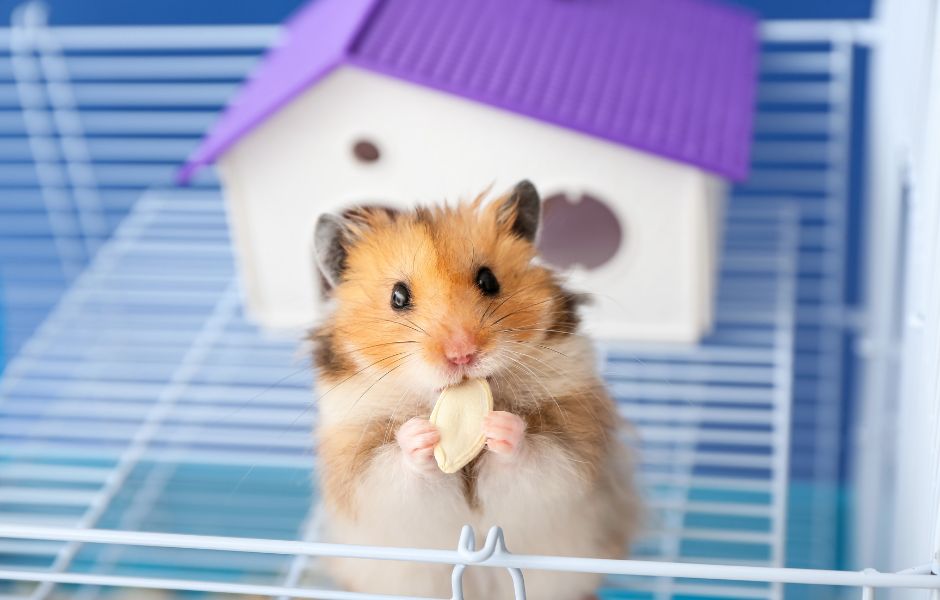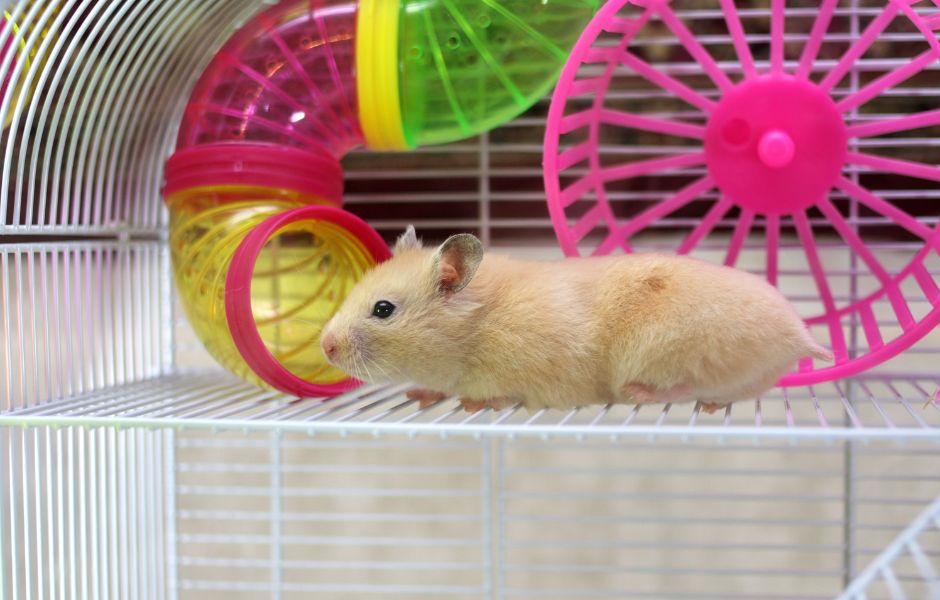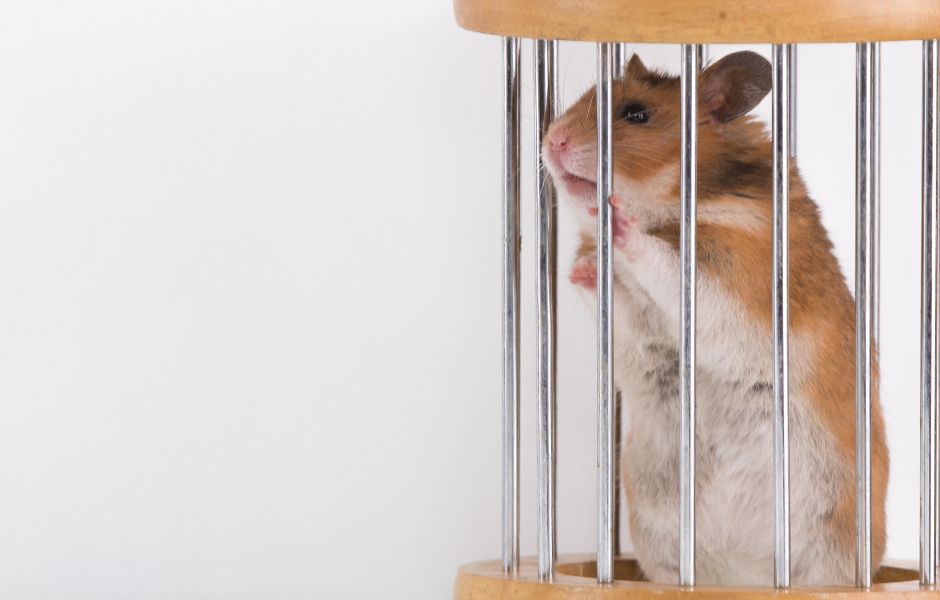Hamsters are popular pets for people of all ages. They are small, cute, and easy to take care of. However, like all pets, they require a comfortable and safe environment to live in. This is where the hamster house comes in.
A hamster house is a miniature home for your furry friend. It provides a place for your hamster to sleep, eat, and play. Hamster houses come in a variety of sizes and styles, from basic plastic cages to elaborate multi-level habitats.
Understanding the basics of hamster houses is essential to providing your pet with a comfortable and happy home.
Key Takeaways
- Hamsters need a comfortable and safe environment to live in.
- A hamster house is a miniature home for your pet to sleep, eat, and play.
- Understanding the basics of a hamster house is essential to providing your pet with a comfortable and happy home.
Understanding Hamsters
Hamsters are small, furry rodents that make great pets. They are native to Syria and are known for their cute appearance and playful nature. In this section, we will explore some key facts about hamsters that every pet owner should know.
Physical Characteristics
Hamsters are typically between 2-4 inches long and weigh between 4 and 7 ounces at a healthy weight. They have short, stubby legs, round ears, and a short tail. Hamsters come in a variety of colors, including brown, gray, white, and black. Some hamsters have long hair, while others have short hair.

Behavior
Hamsters are nocturnal animals, which means they are most active at night. They love to run and play, and they need plenty of exercise to stay healthy. Hamsters are also social animals and enjoy interacting with humans and other hamsters. However, it’s important to note that some hamsters can be territorial and may not get along with other hamsters.
Diet
Hamsters are omnivores, which means they eat both plants and animals. In the wild, they eat seeds, nuts, insects, and small animals. As pets, hamsters should be fed a diet that is high in protein and fiber. Commercial hamster food is available at pet stores and can provide a balanced diet for your pet. It’s also important to provide fresh fruits and vegetables as a treat.
Housing
Hamsters need a safe and comfortable place to live. A hamster cage should be at least 12 inches by 18 inches and have plenty of space for your pet to run and play. The cage should be lined with bedding material, such as wood shavings or paper-based bedding. Hamsters also need hiding places, such as tunnels or igloos, to feel secure.
Health
Like all pets, hamsters can get sick. It’s important to keep your hamster’s cage clean and provide fresh food and water every day. Signs of illness in hamsters include lethargy, loss of appetite, and diarrhea otherwise known as wet tail. If you notice any of these symptoms, it’s important to take your hamster to the vet.
Overall, hamsters make great pets for people of all ages. By understanding their physical characteristics, behavior, diet, housing needs, and health, you can provide a safe and happy home for your furry friend.
Hamster House Basics
Size and Space
When it comes to hamster houses, size matters. Hamsters need enough space to move around, play, and explore. A good rule of thumb is to provide at least 360 square inches of floor space. However, bigger is always better, and hamsters will appreciate having more room to roam.
It’s also essential to consider the height of the cage. Hamsters are natural climbers, so a tall cage with multiple levels and platforms will provide them with opportunities to exercise and stay active.
Material and Safety
The material of the cage is also crucial. Hamster houses should be made of non-toxic materials that won’t harm the hamster if chewed or ingested. Avoid cages made of cedar or pine, as the oils in these woods can be harmful to hamsters.

Wire cages are a popular choice, but it’s essential to make sure the spacing between the wires is small enough to prevent the hamster from escaping or getting stuck. Additionally, the cage should have a solid bottom to prevent the hamster from injuring its feet.
Ventilation and Light
Proper ventilation is necessary for a healthy hamster. The cage should have adequate airflow to prevent the buildup of ammonia from urine and feces. However, it’s also crucial to keep the cage away from drafts or direct sunlight, which can be harmful to the hamster.
Hamsters also need access to natural light to maintain their circadian rhythm. Placing the cage near a window or providing a full-spectrum light can help keep the hamster healthy and happy.
Overall, providing a safe and comfortable living space is essential for the health and well-being of a hamster. By considering the size, material, ventilation, and light of the cage, owners can ensure their furry friends have a happy and healthy home.
Types of Hamster Houses
Cage
Cages are one of the most common types of hamster houses. They can be purchased at pet stores and come in a variety of sizes and shapes. Typically, cages have wire walls and a plastic base.

They provide good ventilation and are easy to clean. However, some cages may not be suitable for certain types of hamsters, such as dwarf hamsters, as the gaps between the wires may be too large.
Aquarium
Aquariums are another option for hamster houses. They are made of glass or plastic and provide good visibility. They are also easy to clean and provide good ventilation. However, they may not be suitable for hamsters that like to climb, as there is no way for them to do so in an aquarium.
Bin Cage
Bin cages are a popular DIY option for hamster houses. They are made by converting a plastic storage bin into a hamster house. They provide plenty of space and are relatively inexpensive to make. They are also easy to clean and provide good ventilation. However, they may not be as sturdy as other types of hamster houses.
DIY Hamster House
DIY hamster houses can be made from a variety of materials, such as cardboard, wood, or PVC pipes. They provide a lot of flexibility in terms of design and can be customized to suit the needs of the hamster. However, they may not be as durable as other types of hamster houses and may require more maintenance.
In conclusion, there are several types of hamster houses available, each with their own advantages and disadvantages. The choice of hamster house will depend on the needs of the hamster and the preferences of the owner.
Essential Features of a Hamster House
When it comes to creating a comfortable home for a pet hamster, it’s important to consider the essential features that will keep them healthy and happy. A hamster house should have three main areas: a bedding area, an exercise area, and a feeding area.
Bedding Area
The bedding area is where your hamster will spend most of its time sleeping and relaxing. It should be cozy, comfortable, and easy to clean. Some essential features of a bedding area include:
- Soft bedding material such as shredded paper or wood shavings
- A hideaway or nest box for privacy
- A comfortable sleeping area, such as a hammock or cozy bedding
Exercise Area
Hamsters are active creatures that need plenty of exercise to stay healthy. An exercise area should be spacious and provide opportunities for your hamster to run, climb, play and maybe even some DIY toys. Some essential features of an exercise area include:
- A running wheel that’s the right size for your hamster
- Toys and tunnels for climbing and exploring
- Plenty of space to run and play
Feeding Area
A feeding area should be easily accessible and provide your hamster with a variety of nutritious foods. Some essential features of a feeding area include:
- A food dish that’s the right size for your hamster
- Fresh water in a water bottle or dish
- A variety of foods, including pellets, seeds, and fresh fruits and vegetables
Overall, a hamster house should be designed with your pet’s needs in mind. By providing a comfortable bedding area, a spacious exercise area, and a nutritious feeding area, you can create a happy and healthy home for your furry friend.
Maintenance and Cleaning of Hamster Houses
Proper maintenance and cleaning of a hamster house is essential to ensure the health and well-being of your furry friend. A dirty and unhygienic environment can lead to various health issues for your hamster, including respiratory problems and skin infections.
Here are a few tips to keep your hamster house clean and well-maintained:
- Spot cleaning: Spot cleaning involves removing any visible waste or soiled bedding from the cage on a daily basis. This can be done using a small scoop or a tissue paper. It is important to remove any uneaten food as well to avoid attracting insects and rodents.
- Weekly cleaning: A thorough cleaning of the hamster house should be done once a week. This involves removing your hamster from the cage and placing him in a secure and safe location. Then, remove all the bedding, toys, and accessories from the cage and wash them with warm water and mild soap. Rinse them thoroughly and allow them to dry completely before placing them back in the cage.
- Deep cleaning: Deep cleaning should be done once a month or as needed. This involves cleaning the cage with a pet-safe disinfectant to kill any bacteria or germs that may be present. Rinse the cage thoroughly with water and allow it to dry completely before adding bedding and accessories.
- Bedding: Choosing the right bedding is crucial for maintaining a clean and healthy hamster house. Avoid using cedar or pine shavings as they can cause respiratory problems in hamsters. Instead, opt for paper-based bedding or aspen shavings.
In conclusion, proper maintenance and cleaning of a hamster house is crucial for the health and well-being of your furry friend. By following these simple tips, you can ensure that your hamster lives in a clean and hygienic environment.
Potential Hamster House Problems and Solutions
Hamsters are adorable pets that require a comfortable and safe living environment. However, there are potential problems that may arise when it comes to their housing.
Here are some common hamster house problems and their solutions.
Problem: Lack of Space
Hamsters are active animals that require enough space to move around and play. A small cage can make them feel cramped, stressed, and unhappy. Inadequate space can also lead to health problems, such as obesity and respiratory issues.
Solution: Choose a Bigger Cage

When selecting a hamster house, ensure that it is spacious enough to accommodate your pet’s needs. A cage that is at least 18 inches long, 12 inches wide, and 12 inches tall is recommended for a single hamster.
Consider a larger cage if you have more than one hamster. Also, provide enough toys and accessories, tubes and tunnels to keep your furry friend entertained.
Problem: Poor Ventilation
As mentioned earlier, hamsters are susceptible to respiratory problems, and poor ventilation can exacerbate the issue. A poorly ventilated cage can also cause a buildup of ammonia from urine and feces, leading to unpleasant odors and health problems.
Solution: Ensure Adequate Airflow
Choose a cage with proper ventilation, such as one with wire or mesh sides. Avoid placing the cage in a damp or humid area, and clean the cage regularly to prevent odor buildup.
Additionally, avoid using cedar or pine shavings as bedding, as they can release harmful fumes.
Problem: Unsafe Accessories
Hamsters love to chew and explore, but some accessories can pose a danger to their health. Sharp or small objects can cause injury or choking, while toxic materials can lead to poisoning.
Solution: Choose Safe Accessories
Select accessories that are designed specifically for hamsters and are free of sharp edges or small parts that can be swallowed. Avoid using plastic items that can be chewed easily, and opt for wood or ceramic instead. Also, research any new accessories before introducing them to your pet to ensure they are safe.
In conclusion, providing a safe and comfortable living environment for your hamster is crucial for their well-being. By addressing potential problems and implementing solutions, you can ensure that your pet is happy and healthy.
Frequently Asked Questions

What are some DIY ideas for a hamster hideout?
There are many DIY ideas for a hamster hideout that you can try. Some people use cardboard boxes, while others use PVC pipes and fittings to create tunnels and hideouts. You can also use wooden blocks to create a multi-level hideout, or even repurpose a ceramic mug or bowl as a cozy hideaway.
Where can I find a hamster house for sale?
You can find hamster houses for sale at most pet stores, as well as online retailers such as Amazon and Chewy. Be sure to look for a house that is the right size for your hamster and has the features that you need.
What are some features to look for in a hamster house?
When looking for a hamster house, it’s important to consider the size of the house, as well as the materials it’s made from. You should also look for a house that has a secure lid or door, as well as adequate ventilation. Some houses also come with built-in accessories such as wheels or water bottles.
Is it necessary for hamsters to have a house in their cage?
While it’s not strictly necessary for hamsters to have a house in their cage, it can provide them with a sense of security and a place to retreat to when they feel stressed or overwhelmed. A house also gives your hamster a place to sleep and store food.
Can hamsters live in dollhouses or other small structures?
While hamsters can technically live in dollhouses or other small structures, it’s not recommended. These structures may not provide adequate ventilation or space for your hamster to move around, and could also pose a safety hazard if they are not designed specifically for hamsters.
What is a good size for a hamster house?
A good size for a hamster house is one that is at least 6 inches by 6 inches, with a height of at least 4 inches. However, larger houses are generally better, as they provide more space for your hamster to move around and explore. Be sure to choose a house that is appropriate for the size of your hamster and the size of their cage.
Conclusion
In conclusion, hamster houses are an essential item for any hamster owner. They provide a safe and comfortable space for hamsters to rest, play, and exercise. The different types of hamster houses available on the market offer a wide range of options to suit different hamster breeds, sizes, and personalities.
When choosing a hamster house, it is important to consider the size, material, and design of the house. A house that is too small can cause stress and health problems for the hamster, while a poorly designed house can be difficult to clean and maintain. Additionally, it is important to choose a house made of safe and non-toxic materials, such as wood or plastic.
Overall, a well-designed and properly sized hamster house can greatly improve the quality of life for a pet hamster. By providing a comfortable and safe space for the hamster to live, play, and explore, owners can ensure that their furry friends are happy and healthy.